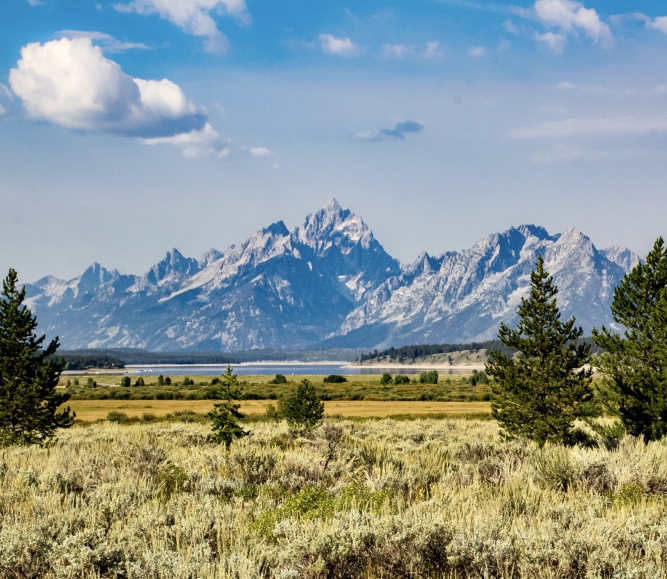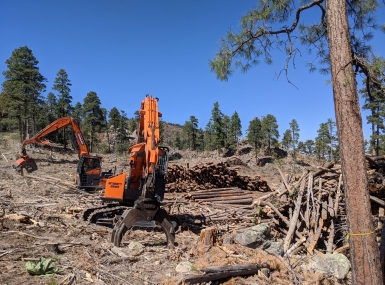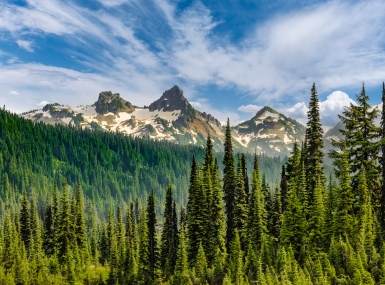A Split Story: Economic Trends Within Public Lands Counties

Upcoming Events
Related News
Sixty-two percent of counties have federally owned land within the county boundaries. These counties cannot collect property taxes on federal land yet must still provide essential services for residents and visitors each year.
Federal public lands counties experience high growth on average; however, when analyzing by county size and share of public lands, the story becomes more complex and the economic trends of these counties demonstrate both growth and decline.
Introduction
Jump to Section
Sixty-two percent of counties have federally owned land within the county boundaries. These counties cannot collect property taxes on federal land yet must still provide essential services for residents and visitors each year.
Federal public lands counties experience high growth on average; however, when analyzing by county size and share of public lands, the story becomes more complex and the economic trends of these counties demonstrate both growth and decline.
One consistent likeness among public lands counties, growth or decline, remains the limitation on revenue generation through taxation, property or otherwise, which can cause revenue shortages that strain service delivery expenditures.
To understand the county landscape and the impact of public lands on counties, we examine the local economic trends by share of public lands counties across the nation, breaking the analysis into high share, medium share and low share.
Depending on the share of public land in a county’s boundary, challenges such as remote area access, infrastructure development, substantial visitor traffic, difficulty rebounding the economy amidst natural disasters, and coordination with the federal government persist at various levels.
Key Takeaways
1. Public lands counties facing record growth of population see challenges in affordability and service delivery.
- Counties with medium shares of federal public lands’ population have grown more frequently and declined less frequently than non-public lands counties.
- Average home values in counties with more than a 25% share of public lands have grown exponentially since the end of 2020.
- The population growth and overall visitor increase are straining the fiscal positions of several counties.
- The fastest growth in economic output is seen in counties with medium shares of federal public lands.
2. Public lands counties facing decline in population are challenged by public land constraints when trying to rebound the local economy.
- The slowest growth in economic output is seen in counties with high shares of public lands.
- Counties with high shares of public lands see the most frequent population decline when compared to counties with less or no public lands.
- For counties with high shares of public lands, the average home value was 40% higher than national figures.
3. Structural challenges restrict all public lands counties from making up for lost revenue.
- In the 12 states where 25% or more of the land is federally owned, nearly all counties face two or more property tax caps imposed by the state.
States with a Quarter or More Public Land Face Multiple State-Imposed Property Tax Caps
Percent Public Land and Number of State Property Tax Caps by State 
- Local expenditures for community service delivery in counties that received PILT increased 25% while PILT payments overall increased 18%, a 7% offset over a five-year period.
Featured Initiative
National Center for Public Lands Counties
The NACo Center for Public Lands Counties is dedicated to advancing the policy and practice study of America’s public lands counties. Our mission is to deepen the understanding and address the unique challenges faced by counties containing federal lands through strategic research and collaboration.

Related News

Counties search for footing amid federal workforce cuts
Staffing reductions in the federal land management agencies are upsetting the intergovernmental balance in public lands counties.

U.S. House passes bipartisan legislation encouraging active forest management
On January 23, the U.S. House of Representatives passed the Fix Our Forests Act (H.R. 471), also known as FOFA. Initially introduced by Representatives Bruce Westerman (R-Ark.) and Scott Peters (D-Calif.), this bipartisan legislation will promote active forest management to curtail the wildfire crisis and protect rural communities, infrastructure and natural resources.

County Countdown – January 28, 2025
The first 100 days, Intergovernmental Disaster Reform Task Force fly-in, SALT deduction profiles released, reauthorization of Secure Rural Schools, and Medicaid and counties.